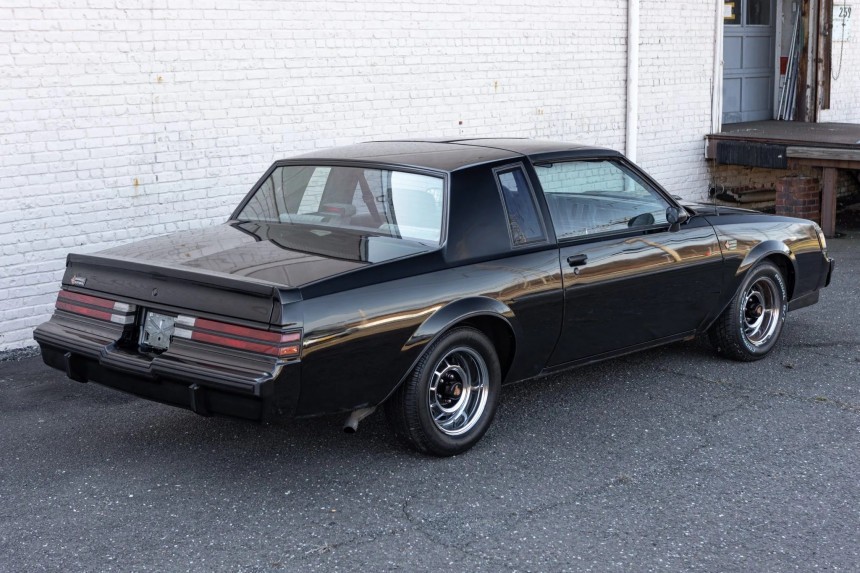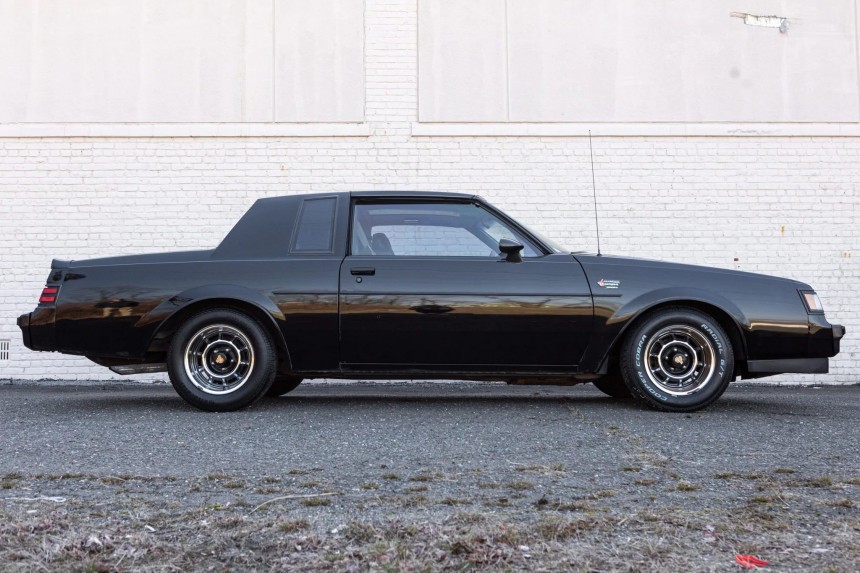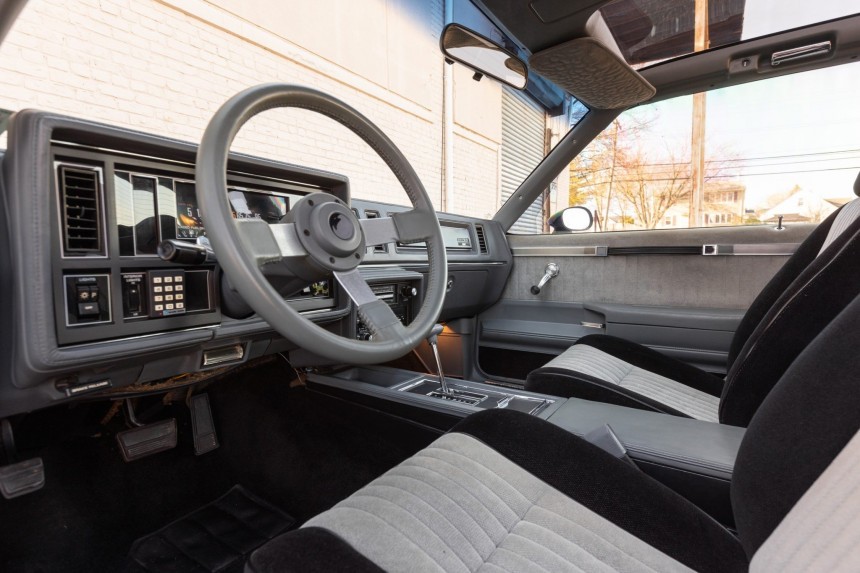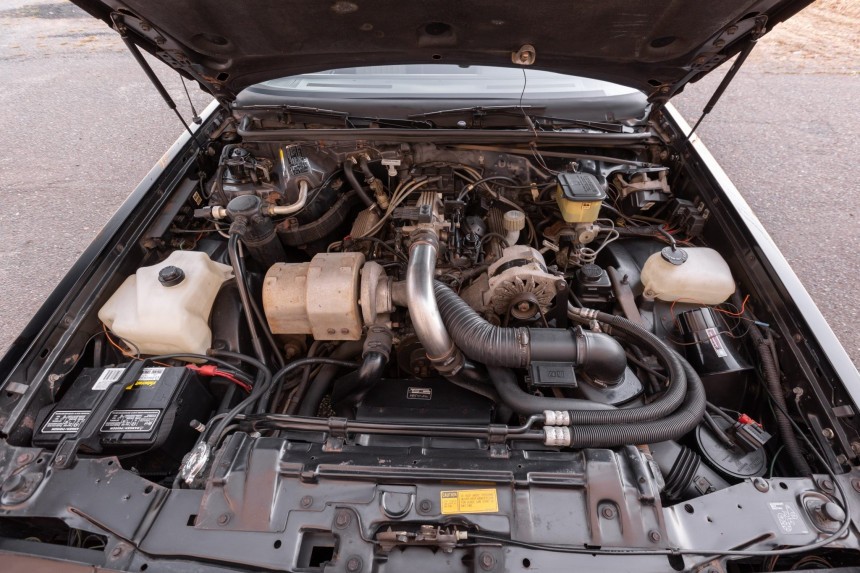Nowadays, Buick is just a shadow of its former self. In fact, its entire marketing scheme is based on people not knowing what a Buick looks like. That’s sad, but there was a time when Buick made good, exciting cars, and, arguably, the best one of them all is the Grand National, so let’s dive.
Buick was born in 1899, at the hands of David Dunbar Buick, making it one of the oldest American car brands ever. Buick was also the brand that established General motors in 1908. What followed was a history of good cars, but nothing extraordinary, and people nowadays tend to forget that Buick is still around.
This ignorance is there because Buick’s lineup, while it is more than a decent one, is as exciting as the color beige. If a car was a sigh, it would be the Buick Enclave. That said, in their really long history, some gems were released, like the Riviera, the Skylark, or the GSX - but there is one that rises above all, the Grand National.
In the early ‘80s, Buick was pumping out underpowered street cars to the bored masses. Surprisingly, given this anemic roster, they managed to win the Nascar Grand National series back-to-back, in ‘81 and ‘82. Knowing that what wins on Sunday sells on Monday, Buick sent over 215 Regals to Cars and Concepts to be retrofitted with the Grand National package - that meant a special paint job, blacked-out trim pieces, and the addition of a front air dam, and a rear spoiler.
But, under the hood, in true Buick form, the Grand National packed a naturally-aspirated V6 with a shoulder-sagging 125 hp (127 ps). As a side note, I know that in 1982 a turbocharger was fitted to 35 of them, bumping power output up to 175 hp (177 ps) – but that was still pretty damn slow.
In 1983, the Grand National took a gap year, to focus on itself, and become better, stronger, and faster. The following year, the Grand National returned, packing a punch under the hood and sinister styling.
The Grand National’s run was short, only three years. But, in that time period, it got better and better, reaching its peak in 1987. What happened then, you may ask? Well, from the normal Grand National pool, 547 were chosen to be transformed into absolute monsters - the GNX. Buick sent the chosen ones over to McLaren, where they received bigger turbos, bigger intercoolers, better ECUs, and a new exhaust.
The result was mind-blowing. Buick said that the GNX produced 276 hp (280 ps), but it ran a 12.7-second quarter mile - that’s faster than an F40, faster than a Porsche 930, and way faster than GM’s golden child, the C4 ‘Vette, so that power output might be an understatement.
Now, to understand why the Grand National is so good, we must take a deeper look, and thankfully, we have a beautiful example from 1986 to use as an example. No, it’s not a GNX, but it still played an important role in car culture, especially in America. It redefined the muscle car, proving that indeed, there is a replacement for displacement, in the form of a sodding great turbo.
In the looks department, the Grand National looks properly villainous. It is finished in the only color you could get one in - black. The only bit of chrome you’ll find on this car is on the grille and on the wheels, which are 15 inches in diameter and wrapped in Cooper Cobra Radial tires in the front, and Conti’s on the back. Everything else is finished in black.
Moving on to the interior, you’ll find your standard American car interior of the mid-80s that is, plasticky to say the least. But, it features a Turbo-6 emblem here and there, so it makes up for it. The seats are made from black cloth with gray inserts. The leather steering wheel has a three-spoke design and fronts a few gauges, among which the coolest one is by far the turbo pressure gauge.
Now, it’s time to get to the most important thing about this car - the engine. The Grand National was based on the Buick T-Type, which, in turn, was based on the Regal. The Grand National was nothing more than an appearance package. It has the same power output of 235 hp (238 ps) from a 3.8-liter (232 ci) turbocharged V6. But, this is an appearance package done right, with the Grand National looking way more serious and masculine than the T-Type, making it more appealing to the 'there’s no replacement for displacement' masses.
All that oomph is sent to the rear wheels via a four-speed automatic transmission and a limited-slip differential. Stopping power is provided by front disc brakes and rear drums, which is a little sketchy given the performance.
The Grand National played its part in the American automotive scene, driving a turbo-shaped hole in the heart of even the most stubborn, old-school, muscle-car fans out there, but it was gone too soon, and it also represented a fading glimpse of what Buick could have been.
That said, if you want to own a piece of history, this one is up at auction in South Amboy, New Jersey. It isn’t a perfect example as it needs a little more love, but it is a one-owner vehicle, and it will fulfill all of your turbo dreams. It is currently sitting at 29,500 dollars, and it comes with a clean Carfax and a Clean New Jersey title.
Look, I also love a massive V8, but you’d be hard-pressed to find anything cooler than a turbocharged muscle car from one of the darkest ages of the American automotive landscape.
This ignorance is there because Buick’s lineup, while it is more than a decent one, is as exciting as the color beige. If a car was a sigh, it would be the Buick Enclave. That said, in their really long history, some gems were released, like the Riviera, the Skylark, or the GSX - but there is one that rises above all, the Grand National.
In the early ‘80s, Buick was pumping out underpowered street cars to the bored masses. Surprisingly, given this anemic roster, they managed to win the Nascar Grand National series back-to-back, in ‘81 and ‘82. Knowing that what wins on Sunday sells on Monday, Buick sent over 215 Regals to Cars and Concepts to be retrofitted with the Grand National package - that meant a special paint job, blacked-out trim pieces, and the addition of a front air dam, and a rear spoiler.
In 1983, the Grand National took a gap year, to focus on itself, and become better, stronger, and faster. The following year, the Grand National returned, packing a punch under the hood and sinister styling.
The Grand National’s run was short, only three years. But, in that time period, it got better and better, reaching its peak in 1987. What happened then, you may ask? Well, from the normal Grand National pool, 547 were chosen to be transformed into absolute monsters - the GNX. Buick sent the chosen ones over to McLaren, where they received bigger turbos, bigger intercoolers, better ECUs, and a new exhaust.
The result was mind-blowing. Buick said that the GNX produced 276 hp (280 ps), but it ran a 12.7-second quarter mile - that’s faster than an F40, faster than a Porsche 930, and way faster than GM’s golden child, the C4 ‘Vette, so that power output might be an understatement.
In the looks department, the Grand National looks properly villainous. It is finished in the only color you could get one in - black. The only bit of chrome you’ll find on this car is on the grille and on the wheels, which are 15 inches in diameter and wrapped in Cooper Cobra Radial tires in the front, and Conti’s on the back. Everything else is finished in black.
Moving on to the interior, you’ll find your standard American car interior of the mid-80s that is, plasticky to say the least. But, it features a Turbo-6 emblem here and there, so it makes up for it. The seats are made from black cloth with gray inserts. The leather steering wheel has a three-spoke design and fronts a few gauges, among which the coolest one is by far the turbo pressure gauge.
All that oomph is sent to the rear wheels via a four-speed automatic transmission and a limited-slip differential. Stopping power is provided by front disc brakes and rear drums, which is a little sketchy given the performance.
The Grand National played its part in the American automotive scene, driving a turbo-shaped hole in the heart of even the most stubborn, old-school, muscle-car fans out there, but it was gone too soon, and it also represented a fading glimpse of what Buick could have been.
Look, I also love a massive V8, but you’d be hard-pressed to find anything cooler than a turbocharged muscle car from one of the darkest ages of the American automotive landscape.















